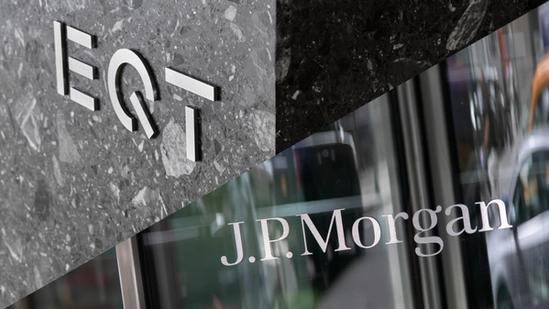Eric Liu: How Private Equity Is Expanding Access and Addressing Its Liquidity Challenges


Private equity is evolving. Liquidity is increasing, driven by a rapidly expanding secondary market, and retail investors are beginning to access an asset class historically limited to institutional players, argues EQT’s Eric Liu.
Private equity has historically been accessible only to pension funds and other large institutional investors, who locked up their investments in PE funds for a decade or so at a time. But private equity is a constantly evolving asset class. Our industry is currently opening its doors to more individual investors – a push that involves efforts to make withdrawals easier than in the past.
Many of the world’s largest pension funds place a double-digit percentage of their assets into private equity, according to data compiled by S&P Global. They’re drawn by PE’s strong governance model, in which shareholders and boards are highly motivated and focused on value creation. PE firms can make action-oriented changes to the companies they are invested in and are accountable and directly aligned with the success of the investment. They have extensive resources and can bring best practices to bear from prior portfolio company experience. At EQT, we call it an active ownership mindset.
The draw of active ownership
Compare our active ownership approach to the alternatives. Family offices and venture-backed models have reasonably concentrated shareholder bases but often lack access to the kind of sophisticated tools and best practices that private equity benefits from.
Public companies, on the other hand, suffer from diffuse shareholder bases. Firms like Institutional Shareholder Services (ISS) and Glass Lewis act as voting proxy advisors, limiting the ability of the board and shareholders to influence how a public company is managed. The rise of passive equity funds, whose global net assets now top those of active funds, has exacerbated the detachment of shareholders from company management. Reporting requirements associated with public companies also add an administrative burden, meaning boards spend more time discussing compliance at the expense of operations and strategy.
Addressing liquidity challenges
Of course, private equity has some drawbacks compared with investments in public stocks. Historically, the main challenge has been liquidity, with investments usually tied up for five or more years. Private equity investments are illiquid by their nature, and liquidity in PE is generally only realized by exit events, which are often dependent on favourable market conditions.
During periods of economic uncertainty and market volatility, exit activity tends to slow. In 2023, against a backdrop of sharply increased interest rates, buyout-based exits fell by 44 percent from 2022 to $345bn, while the number of exit transactions fell by 24 percent, according to consultancy Bain & Co. With the IPO market cooling and private equity funds growing larger, more and more portfolio companies have become “stuck.” They are great assets yet the exit route can be difficult at certain points in the economic cycle. That’s one of the main factors driving the development of new liquidity models for those companies and funds.
But even in the liquidity space, we’re seeing real evolution in how private equity operates. This is broadening access to private equity, while providing greater flexibility for both limited partners (LPs), who invest in funds, and general partners (GPs), who manage the investments. One particularly significant development is the expansion of the so-called secondary market for private equity funds, which allows LPs to sell their stake before a fund matures.
The secondary market has grown rapidly. It saw record transaction volumes last year, with specialized firms including Lexington Partners and Ardian raising dedicated multi-billion-dollar secondary funds. A major driver of that secondary market growth has been GP-led restructurings, which account for nearly 50 percent of volume in 2023. A large portion of those GP-led vehicles are continuation funds, which allow general partners to transfer select assets from an existing fund nearing its termination date into a new vehicle with a longer holding period and fresh capital.
The rise of retail investors
On top of this trend, perhaps the most significant development in private equity today is the small but growing presence of retail investors. This development provides access to an asset class historically limited to institutional investors and brings more liquidity to a traditionally illiquid market.
Increasing liquidity and expanding access to retail investors doesn’t, of course, come without risk. Even as private equity funds provide greater liquidity to their investors, the underlying assets remain inherently illiquid. Managers can manage that tension well during normal market conditions, but much greater challenges arise during periods of significant market disruption. Those need to be managed carefully, especially given the expansion of retail investment in the private equity space.
It’s also worth considering what liquidity actually means in the context of both public and private markets. People often assume public markets are liquid, but liquidity is relative. You can sell 100,000 shares on a public exchange, but try selling 20 percent of a company – it won’t happen at the quoted price. Liquidity fades the more you try to move. Public companies aren’t as liquid as they might seem. As liquidity in private equity steadily improves, the line between public and private markets is starting to blur.
Eric joined EQT in 2014 to establish and build out the firm’s private equity business in the U.S. He currently serves on the Board of Directors of Parexel, Waystar, and Zeus. He is also on the Board of EQT Private Equity Company LLC, an operating company seeking to acquire and manage portfolio companies. He was previously on the Board of Directors of Aldevron, Certara, and Press Ganey. Prior to joining EQT, Eric was a Principal at Warburg Pincus where he was responsible for private equity investments in the healthcare industry. Previously, he worked in private equity at The Blackstone Group and in venture capital at Draper Fisher Jurvetson. Eric has a B.A. in Applied Mathematics from Harvard University, where he graduated phi beta kappa and an MBA from the Stanford Graduate School of Business, where he was an Arjay Miller Scholar. He serves on the Advisory Council of the Mossavar-Rahmani Center for Business and Government at the Harvard Kennedy School, and is also a member of the Council on Foreign Relations
ThinQ by EQT: A publication where private markets meet open minds. Join the conversation – [email protected]






